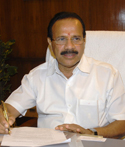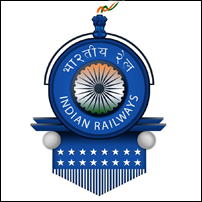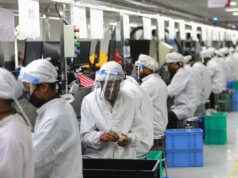Apex industry body Assocham has asked Minister for Railways D.V. Sadananda Gowda to propose a mega plan as part of the vision of a $7-trillion economy to be initiated now and completed in another 15 years ending 2029-30. The plan is expected to create a freight capacity to handle about 50 per cent of the traffic offered by this level of the economy.

Railway Minister
“The plan envisages capacity enhancements with required investment worth $2.5-3 trillion thereby making Indian Railways an engine of growth by creating jobs across the board at various levels, boost demand for construction, steel, cement, equipment, new type of high-load wagons, collapse resistant comfortable coaches, latest signalling and electrical items, and open up the railways for all types of new services for long distance passengers including e-business and entertainment as well as catering,” a study titled ‘Gearing Indian Railways for a $7 trillion economy by 2030’ conducted by the Associated Chambers of Commerce and Industry of India said.
According to Assocham, the mega plan comprises a seven-corridor high-speed freight network for transporting goods back and forth from manufacturing to consumption centres and from all major ports within a specified timeframe of 36 hours.
“Apart from this, it has also been suggested to build an ultra high-speed (up to 300 kmph) passenger services connecting all large and identified urban centres. In the existing lines, all trunk passenger routes should be turned to four line networks effectively separating passenger from goods and services and thereby releasing large capacities for both,” a delegation led by Dr. A.K. Agarwal, Chairman, Assocham’s National Committee on Rail Transport, said. “The plan will also build in it, promotion of industrial growth so that the synergy of rail transport system and that of manufacturing boost each other and completely transform the economic landscape.”
In order to ensure that Indian Railways operates with commercially viable rates as well as to prevent it from misusing its monopoly power against freight or passengers, it has been suggested that a regulatory body be set up and legal provisions be made to fix all charges that it levies for various services provided. The regulatory body would have powers to monitor quality of services and adjudicate complaints of misuse of monopoly power.
A decision offering full management control to the special purpose vehicles or joint ventures set up for each project component would help boost PPP response from the private sector, the study noted.
Expansion of railway network in 2013-14
In 2013-14, Indian Railways completed 1,532 km of new line, doubling and gauge conversion projects against a revised target of 1,525 km. The sections commissioned in the last financial year include:
New Lines : Karur-Salem (85 km), Koderma–Nawadih (34 km), Lalitpur–Tikamgarh (51.5 km), New Morinda-Sanewal (54 km) thereby completing the Chandigarh-Ludhiana line, Qazigund–Banihal (19 km) and Kadur–Chikmaglur (46 km).
Gauge Conversion : Hanumangarh–Sriganganagar (64 km), Manamadurai–Virudunagar (67 km), Darum Madhepura–Murliganj (22 km), Kolar-Chickballapur (85 km) and Rangiya–Rangapara North–Dekargaon (145 km).
Doubling : Panskura–Shyamchak (27 km), 3rd Line; Muri–Tulin (1.5 km) doubling 2nd bridge over river Subernarekha; Jirat-Ambika Kalna (20.23 km); Magrahat–Diamond Harbour (15 km); Kursela-Karagola (17 km); Katereah-Kosi cabin (4 km); Madur-Mandya (19 km) and Birur–Ajjampur (18 km).











